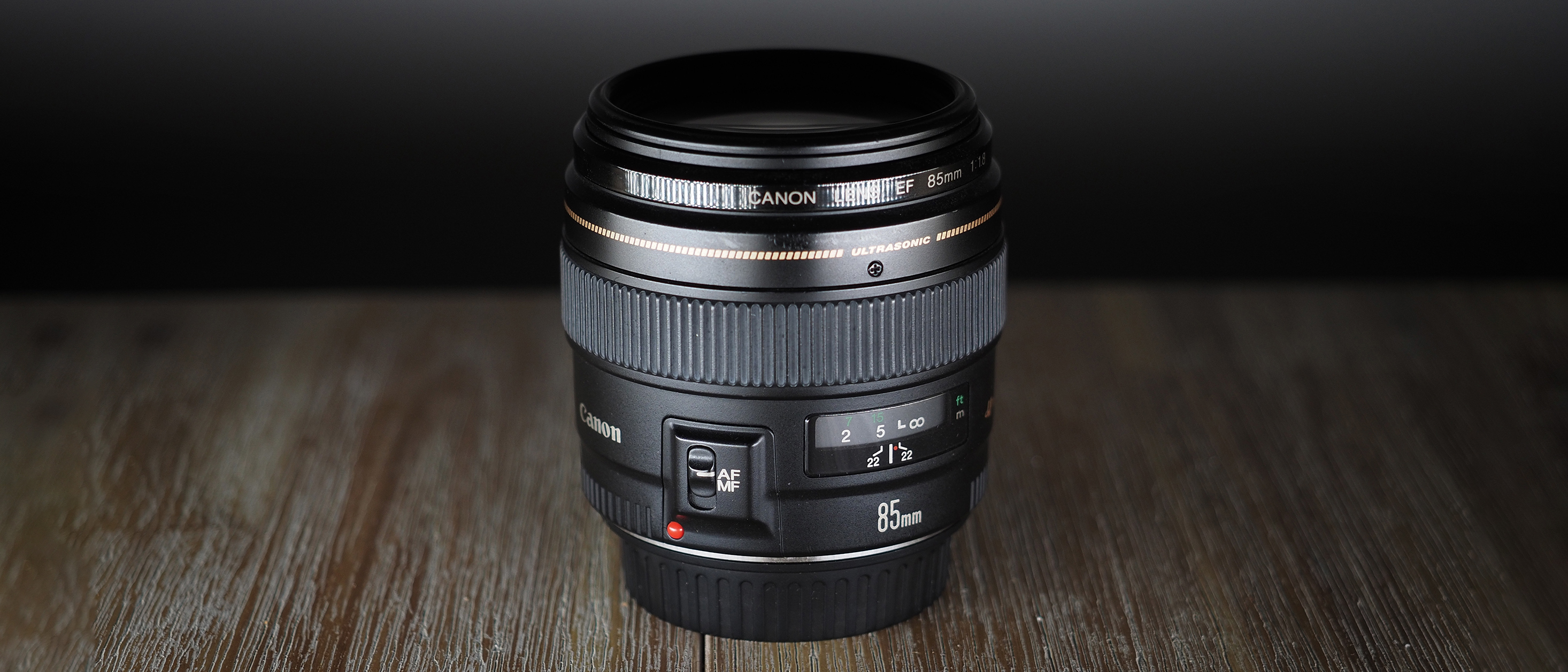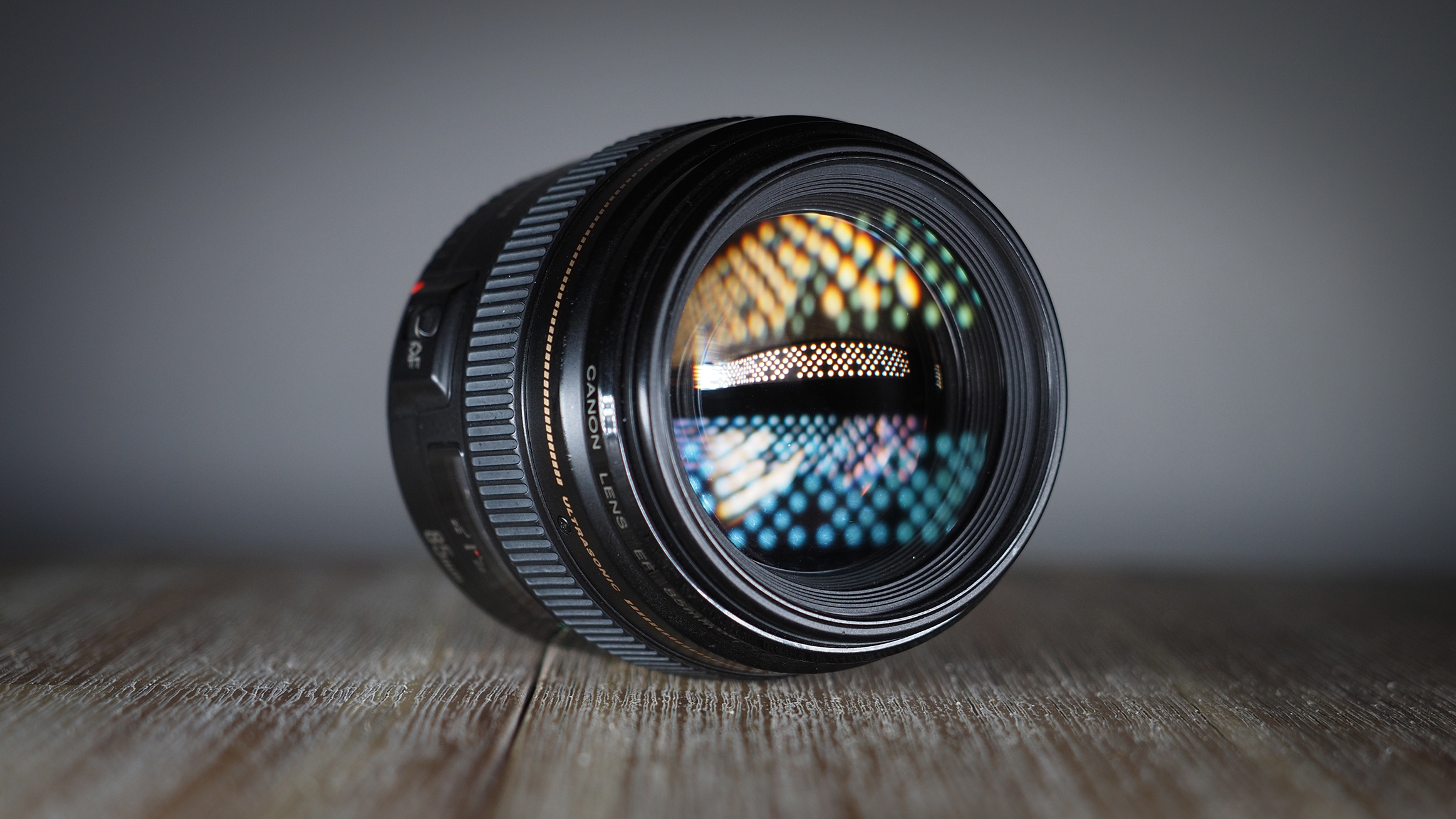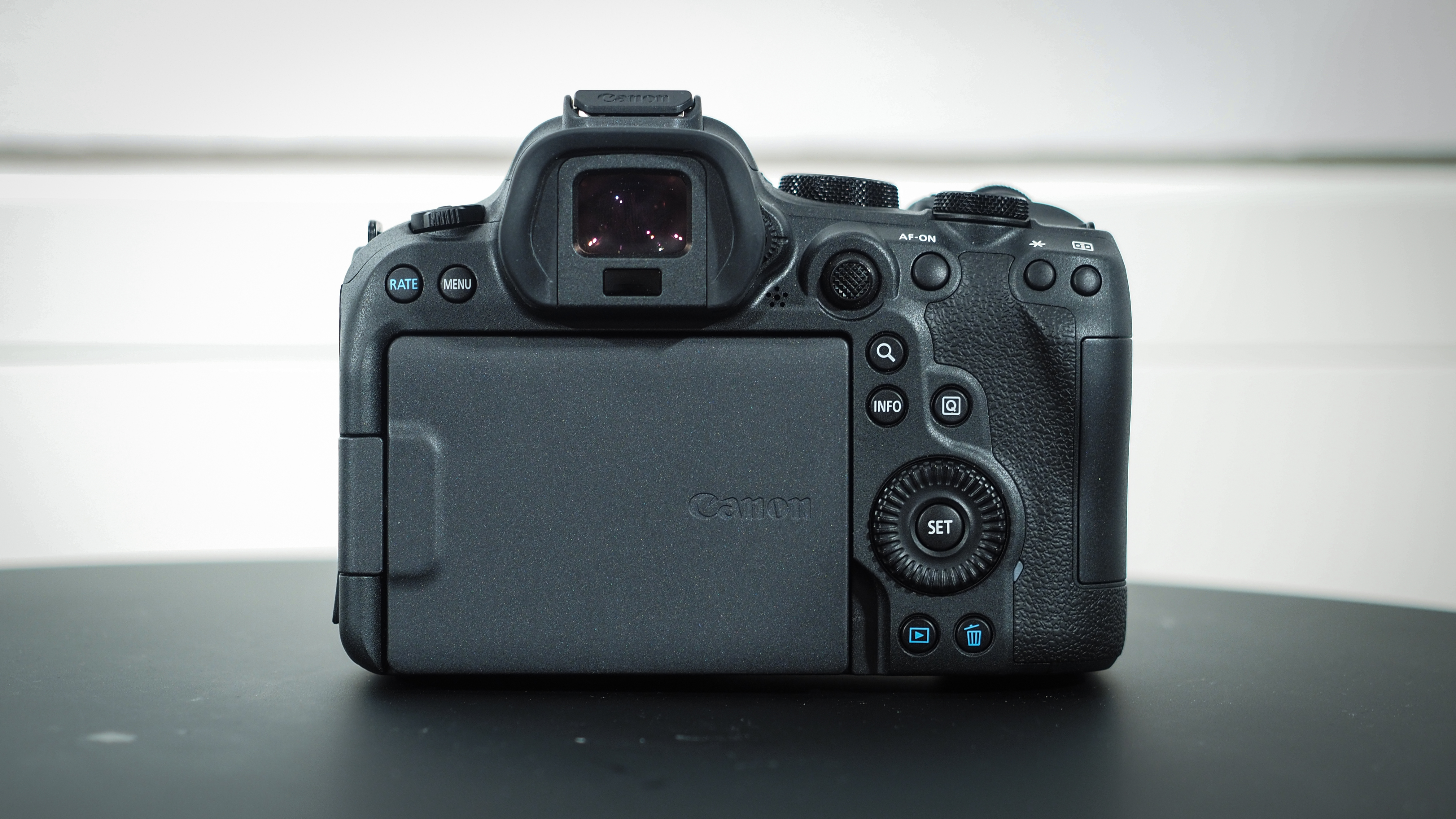Digital Camera World Verdict
Unusually compact and lightweight for an 85mm prime, the Canon EF 85mm f/1.8 USM has a sufficiently fast aperture rating to deliver a fairly tight depth of field and freeze motion even under dimpsy lighting. All in all, it’s a smart, budget-friendly lens that’s ideal for portraiture and still-life photography.
Pros
- +
Small, compact build
- +
Good overall image quality
- +
Budget-friendly
Cons
- -
No weather-seals
- -
Hood sold separately
- -
Edge-sharpness could be better
Why you can trust Digital Camera World
The Canon EF 85mm f/1.8 USM is refreshingly inexpensive to buy. Unless you’re a professional portrait photographer, the chances are that you won’t want to blow your budget on a single lens. This veteran Canon lens is still a firm favorite, not least because it’s reasonably compact and lightweight, ideal for popping in a spare corner of a gadget bag. Better still, it only costs a small fraction of Canon’s ‘faster’ 85mm lenses and is much more lightweight, at just 425g. Naturally, downsizing and cheaper manufacturing costs are mostly due to the narrower aperture rating of f/1.8, compared with the Canon EF 85mm f/1.4L IS USM or EF 85mm f/1.2L USM II lenses.
Read more:
The best portrait lenses
The best lenses for wedding photography
Specifications
Mount: Canon EF
Full-frame: Yes
Autofocus: Yes
Image stabilisation: No
Lens construction: 9 elements in 7 groups
Angle of view: 28.5 degrees
Diaphragm blades: 8
Minimum aperture: f/22
Minimum focusing distance: 0.85m
Maximum magnification ratio: 0.13x
Filter size: 58mm
Dimensions: 75x72mm
Weight: 425g
Key features
Originally launched nearly 30 years ago for 35mm film SLRs, the lens has certainly stood the test of time and is equally viable for digital bodies. The optical path is fairly simple, based on nine elements in seven groups, but includes Super Spectra coatings to reduce ghosting and flare. The ring-type ultrasonic autofocus system is fast, whisper-quiet and has the usual full-time manual override with a purely mechanical linkage.
Handling is good and the lens feels well-built although, typical of non-L-series models, it’s not weather-sealed and you have to buy the hood separately.
Performance
Given the modest aperture rating, sharpness isn’t particularly impressive when shooting wide-open but still sufficient for portraiture, delivering plenty of detail in the eyes. Color fringing and distortion are minimal. The quality of bokeh is very pleasing when shooting wide-open but the 8-blade diaphragm isn’t quite as well rounded as in some competing lenses, tending to give a noticeable octagonal shape to defocused points of light and bright objects when you stop down a little.
Lab results
We run a range of lab tests under controlled conditions, using the Imatest Master testing suite. Photos of test charts are taken across the range of apertures and zooms (where available), then analyzed for sharpness, distortion and chromatic aberrations.
We use Imatest SFR (spatial frequency response) charts and analysis software to plot lens resolution at the center of the image frame, corners and mid-point distances, across the range of aperture settings and, with zoom lenses, at four different focal lengths. The tests also measure distortion and color fringing (chromatic aberration).
Sharpness:
Centre-sharpness is good rather than great wide-open at f/1.8, and edge-sharpness is pretty poor, but that’s not generally an issue for portraiture or still-life photography, where the quality of bokeh is a bigger consideration.
Fringing:
The best camera deals, reviews, product advice, and unmissable photography news, direct to your inbox!
There’s only negligible color fringing at wide apertures and even less at medium to narrow apertures, the lens being a very good performer in this respect.
Distortion: -0.4
There’s only the merest hint of barrel distortion which will barely ever need any correction.
Verdict
The compact, lightweight build makes this a great lens to pop into the spare corner of your kit bag and the relatively inexpensive selling price is a further attraction. It’s capable of delivering beautiful portrait and still life images, so a smart buy for any Canon photographer with less than fully professional aspirations.
Read more:
Best wide-angle lenses for Canon
Best Canon telephoto lenses
Best Canon lenses
Matthew Richards is a photographer and journalist who has spent years using and reviewing all manner of photo gear. He is Digital Camera World's principal lens reviewer – and has tested more primes and zooms than most people have had hot dinners!
His expertise with equipment doesn’t end there, though. He is also an encyclopedia when it comes to all manner of cameras, camera holsters and bags, flashguns, tripods and heads, printers, papers and inks, and just about anything imaging-related.
In an earlier life he was a broadcast engineer at the BBC, as well as a former editor of PC Guide.









